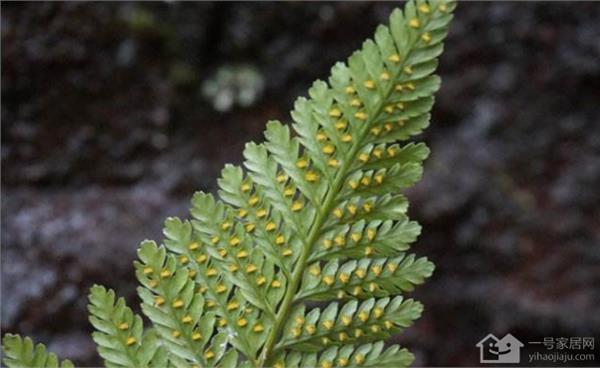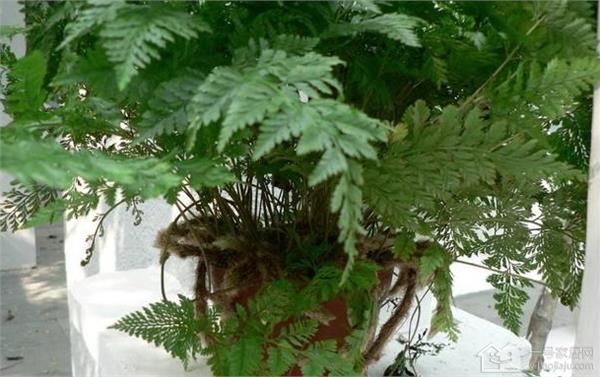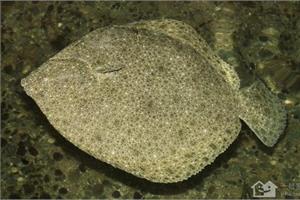Culture methods and matters needing attention of Dryopteris Dryopteris
A small epiphyte that can be cultivated at home. There is also an alias called Wolf Tail Mountain Grass. Today, we mainly want to know how to cultivate the lower round cover stone fern.

1. The cultivation method of round cover shade stone fern (basic knowledge):
The best time of propagation: the cuttings and ramets of P. orbicularis were carried out in spring;
Best soil for growth: Pteridium rotundus is suitable for growing in fertile, well-drained soil;
Growth humidity requirements: Round cover shade stone fern likes warm and semi-cloudy humid environment, and also has certain tolerance to drought and dryness;
The optimum temperature for growth is 21~26℃, and the room temperature should be kept above 5℃ in winter.
The best light for growth: Pteris rotundus prefers bright scattered light, 60% shading in summer and autumn, 30% shading in winter and spring. Fear of strong light, light too strong when easy to yellow leaves.

Second, the cultivation of round cover stone fern precautions:
1. Fertilizer application:
In the growing season, liquid fertilizer is applied once every half month, and dead leaves are removed in time to keep the leaves fresh and green.
2, watering points:
Round cover shade stone fern must maintain a high air humidity, spring and summer growth exuberant, watering should be sufficient, early and late water spray leaves once, and pay attention to ventilation. In summer, it is necessary to spray water frequently and shade properly to keep the stems and leaves fresh and tender.
3. Basin soil replacement:
The potted plant of Pteris rotundus can be prepared with 3 parts of humus soil plus 1 part of coarse sand or pearlite and a small amount of base fertilizer. The bottom of the pot should be padded with broken tiles and bricks to facilitate water permeability. Generally, the pot should be changed once every 1~2 years.
4. Key points of reproduction:
Pteris rotundifolia mainly reproduces by two methods: ramet and insertion. Cuttings, the rhizomes cut into 10 cm left section, coated with plant ash on the wound, and then obliquely inserted into clean humus soil, maintain a certain humidity and carefully cover sprout. Spring, about a month can germinate leaves. Rite often in the spring when the pot, the rhizome will be cut, leaving 2-3 leaves or buds per section, on the soil surface or slightly covered with soil, so that it fixed, placed in a damp place, until the new roots grow out and then gradually moved to the semi-shade.
This grass has strong resistance ability and is easy to cultivate. Cultivation in the early benefit, do not bury too deep, otherwise easy to lead to rot rhizomes. Although it has a strong drought tolerance, but dry leaves easy to age, appear rough, in order to make its normal growth, keep its stems and leaves green and fresh, the growth season should be placed in the semi-bright place, give sufficient water and fertilizer, often keep the soil moist, and appropriate spray humidification, apply liquid fertilizer 2-3 times a month, secondly, to prevent ponding in the basin. When there is too much water, the gray scales on the rhizomes will turn brown, and watering should be stopped immediately. 8-9 Month, it has a period of dormancy, some leaves will yellow withered, should be picked, after a period of time can resume growth.
When winter comes, it is necessary to move indoors to give sufficient light, spray with lukewarm water around noon, if the room temperature can be maintained at about 10℃, it is conducive to maintaining its good viewing effect.
5, pest control:
The insect pests of the round cover shade stone fern have aphids and red spiders, which can be cleaned with soapy water for control, and can also be sprayed with dimethoate or omethoate 1000~1500 times solution to kill. When leaf blight occurs, 50% ammonium bromide solution 300~400 times and 70% thiophane WP 800~1000 times can be sprayed at the initial stage to control leaf blight.
Related
- Wuhan Hospital Iron Tree Blooming Result Was Instantly Frightened by the Gardener Master
- Which variety of camellia is the most fragrant and best? Which one do you like best?
- What is the small blue coat, the breeding methods and matters needing attention of the succulent plant
- Dormancy time and maintenance management of succulent plants during dormancy
- Minas succulent how to raise, Minas succulent plant pictures
- What are the varieties of winter succulent plants
- How to raise succulent plants in twelve rolls? let's take a look at some experience of breeding twelve rolls.
- Attention should be paid to water control for succulent plants during dormant period (winter and summer)
- Watering experience of twelve rolls of succulent plants
- Techniques for fertilizing succulent plants. An article will let you know how to fertilize succulent plants.



